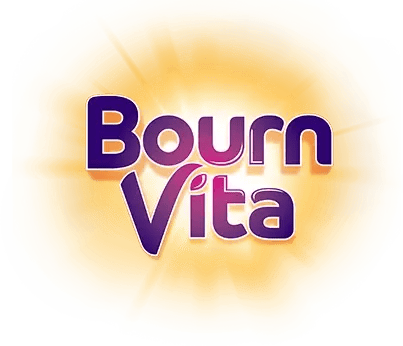- Cooing and Responding to Sounds (0–6 Months)
- Babbling and Imitating Tones (6–12 Months)
- First Words and Simple Instructions (12–18 Months)
- Two-Word Phrases and Naming (18–24 Months)
- Simple Sentences and Everyday Chat (2–3 Years)
- Describing and Questioning (3–4 Years)
- Clear Speech and Longer Conversations (4–5 Years)
- Using Language to Solve Problems (5–6 Years)
- Storytelling and Understanding Emotions (6+ Years)
Introduction
Language development is one of the most fun and important parts of early childhood. It starts long before children say their first word and continues to grow as they learn to express thoughts, ask questions, and understand the world around them. Watching your child move from sounds and gestures to full sentences is a journey of joy, learning, and discovery.

Every child develops at their own pace, but there are certain milestones to guide you on what to expect. For example, by 12 months, many children respond to their name and say simple words like “mama” or “dada”. By 2 years, most start to form 2-word sentences. As they grow, their vocabulary expands, and they start using more complex sentences to express feelings and ideas.
As a parent, you can do a lot to support this process with simple activities at home. Talking to your child during daily routines, reading picture books together, singing rhymes and encouraging them to describe things around them all help strengthen their language skills. These small, regular interactions improve speech and vocabulary and build confidence and emotional connection.
9 Language Development Milestones and Simple At-Home Activities for Children

Cooing and Responding to Sounds (0–6 Months)
In the first few months, your baby starts cooing, babbling, and reacting to your voice. This is their way of learning how communication works. Talk to your baby often—even if they don’t understand yet. Repeat simple sounds, name objects around them, and sing lullabies. Your voice builds comfort and early listening skills.
Babbling and Imitating Tones (6–12 Months)
By this stage, your child may start saying repetitive sounds like “ba-ba” or “da-da.” They also imitate the tone of your voice. Try mirror-talk—repeat what they say with a smile, and say the names of objects they reach for. Use expressive facial gestures. This helps them connect sounds with meaning.
First Words and Simple Instructions (12–18 Months)
Now your child may say a few clear words like “mama,” “ball,” or “bye-bye.” They might also follow simple instructions like “give me the toy.” Label everyday objects as you use them—“Here’s your spoon,” or “Open the door.” Repetition and real-life use help words become part of their memory.
Two-Word Phrases and Naming (18–24 Months)
Around age two, your child may begin combining words, like “want milk” or “go car.” They also enjoy pointing and naming things. Encourage them with questions like “What is this?” or “Where’s the cat?” You can also introduce simple storybooks with clear pictures and repeating familiar words.
Simple Sentences and Everyday Chat (2–3 Years)
Your child starts using 3–4 word sentences like “I want juice” or “Papa, come home.” They also enjoy answering easy questions. Keep conversations flowing throughout the day—ask about their toys, meals, or play. Listen patiently and expand their sentences gently. For example, if they say “red car,” you can reply, “Yes, a big red car!”
Describing and Questioning (3–4 Years)
Children begin asking “why,” “what,” and “how.” They describe what they see and feel. Support this by playing describing and questioning games—“Tell me what you see in this picture” or “What did you do today?” Encourage role-play with dolls or toys to improve storytelling and expression.
Clear Speech and Longer Conversations (4–5 Years)
At this stage, speech becomes more precise and more structured. Your child can hold simple conversations and follow multi-step directions. Introduce games like “Simon Says” or “I Spy” to improve listening and word use. Read longer stories and ask what happened first, next, and last to boost memory and sequencing.
Using Language to Solve Problems (5–6 Years)
Children use language to explain ideas, solve problems, and express emotions. They may say things like “I can’t find my book because it’s under the table.” Support this by encouraging your child to explain their thoughts and actions. You can also play board games that involve turn-taking and discussion.
Storytelling and Understanding Emotions (6+ Years)
At this age, your child starts telling stories with a beginning, middle, and end. They also begin using language to express more complex emotions. Ask open-ended questions like “How did that make you feel?” or “What do you think will happen next?” Encourage journaling, storytelling, or even making up plays with toys.
Conclusion

Language development unfolds step by step, and your support makes all the difference. Understanding these milestones and engaging in simple daily activities help your child grow into a confident, clear communicator. Every word your child learns becomes a building block for future learning and strong relationships. With patience, love, and everyday conversations, you create an environment where your child feels heard, valued, and ready to express themselves with confidence in every stage of life.
Her love for storytelling began with reading her grandfather’s speeches, where Tarishi saw the power of words in creating lasting memories. Combining her passions for food and writing, she has turned her life into a fulfilling path of sharing stories that celebrate flavours and how food brings communities together.
The views expressed are that of the expert alone.
The information provided in this content is for informational purposes only and should not be considered a substitute for professional medical advice, diagnosis, or treatment. Always seek the advice of your physician or another qualified healthcare provider before making any significant changes to your diet, exercise, or medication routines.
















